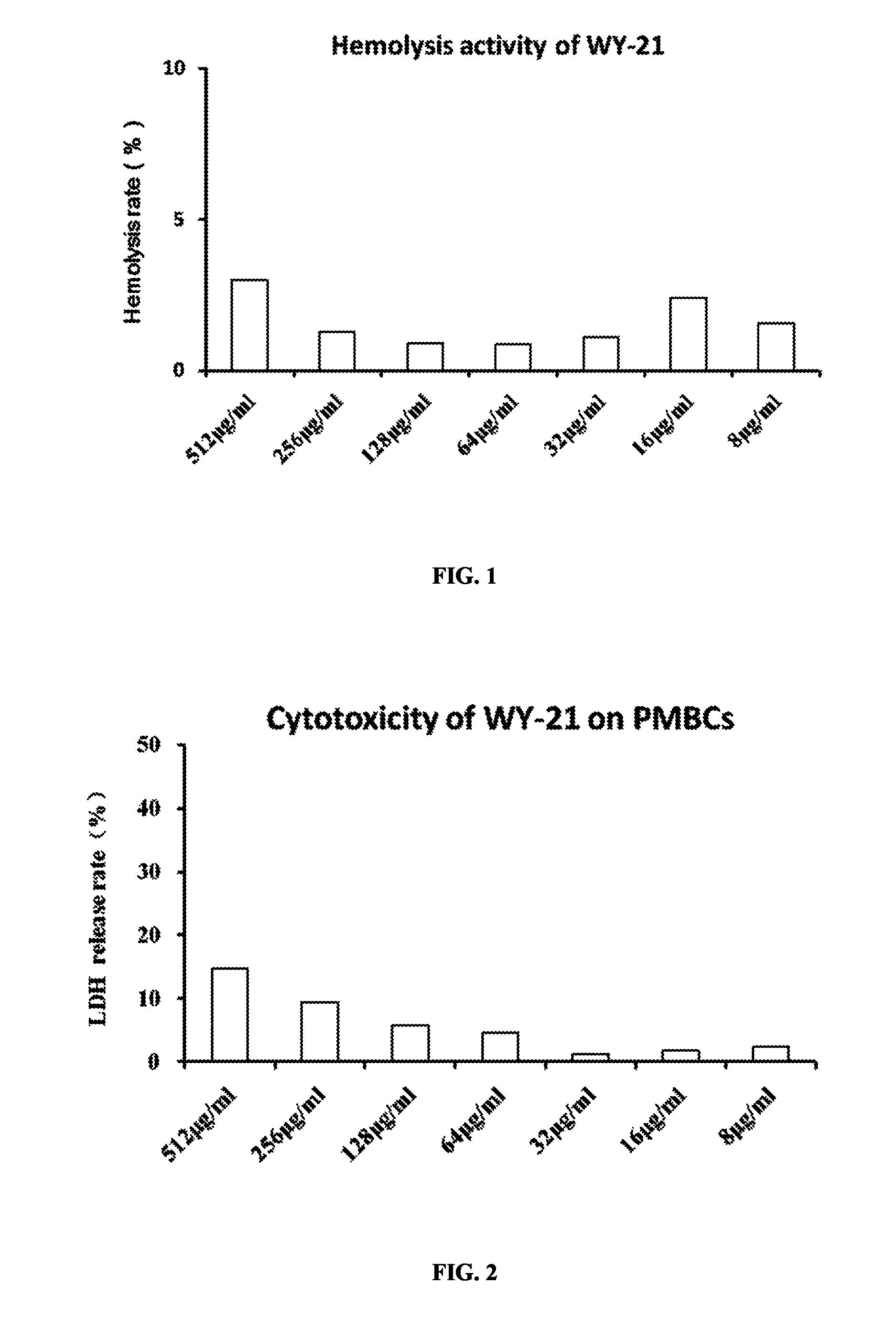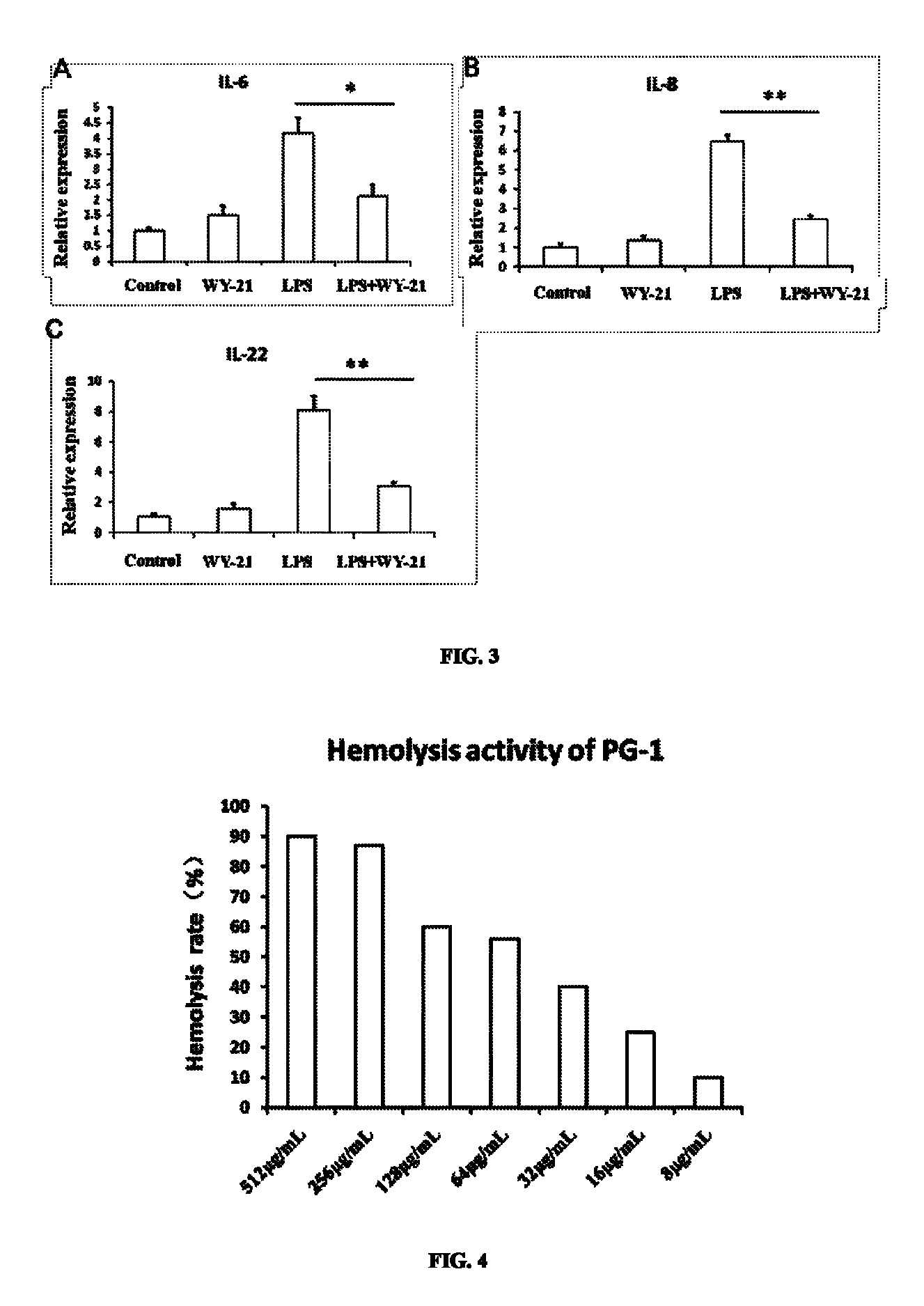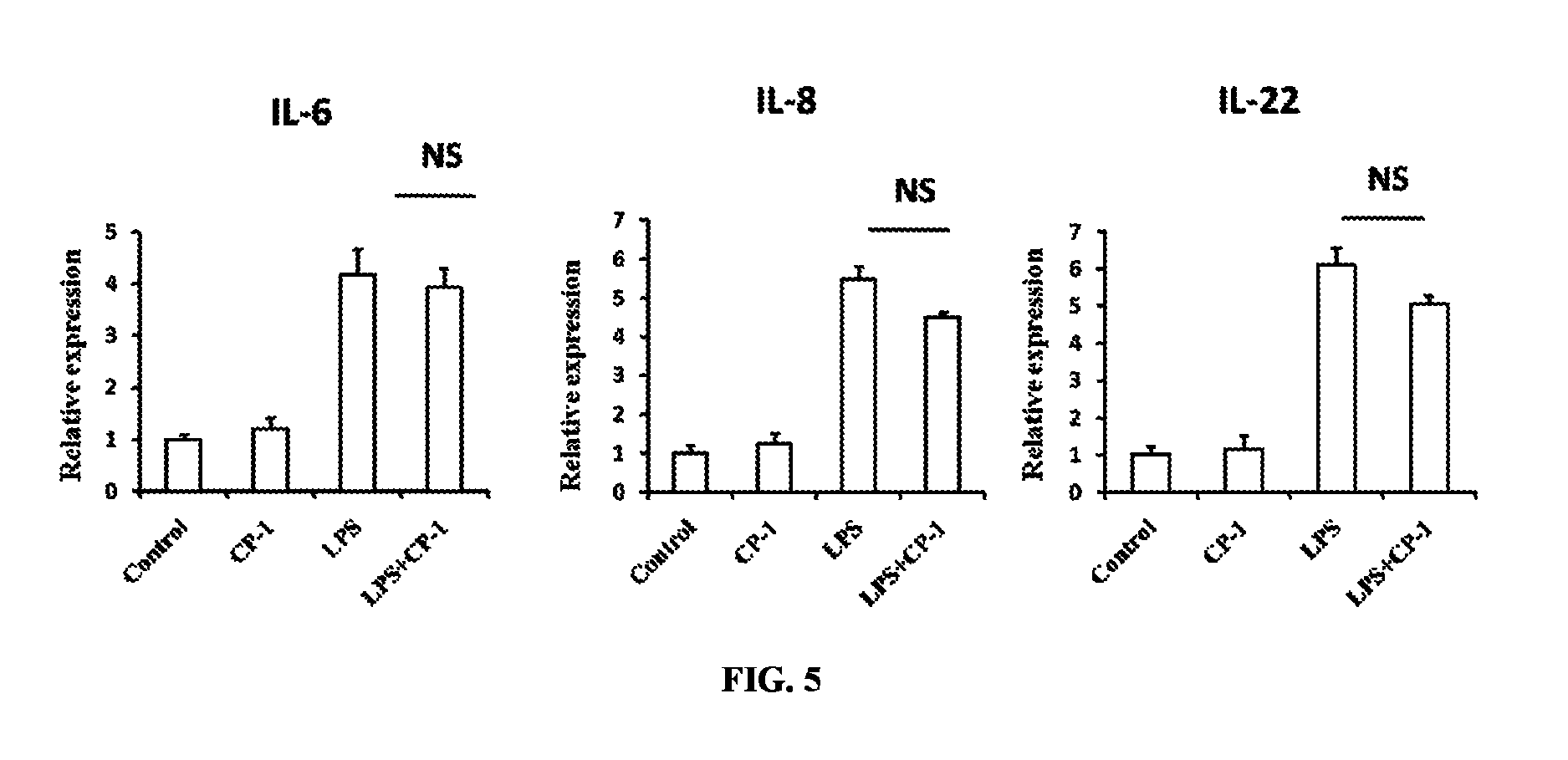Antimicrobial peptide WY-21 and application thereof
a technology of antibacterial peptides and peptides, applied in the field of biomedical technology, can solve the problems of animal product residues, misuse of antibacterial agents, environmental pollution, etc., and achieve the effects of high net charge, convenient synthesis, and high stability
- Summary
- Abstract
- Description
- Claims
- Application Information
AI Technical Summary
Benefits of technology
Problems solved by technology
Method used
Image
Examples
embodiment 1
Preparation of Antimicrobial Peptide WY-21
[0025]In one embodiment of the present invention, an antimicrobial peptide WY-21 was synthesized from C-terminal to N-terminal one by one according to the amino acid sequence of SEQ ID NO:1 by solid phase chemical synthesis using an automated peptide synthesizer. The synthesized antimicrobial peptide WY-21 was purified by desalting using reverse phase high performance liquid chromatograph (HPLC). The purity of the purified WY-21 was evaluated by HPLC, and the evaluated purity is higher than 95%. Matrix Assisted Laser Desorption / Ionization-Time of Flight (MALDI-TOF) was used to determine the molecular weight of the antimicrobial peptide WY-21, and the determined molecular weight is consistent with the theoretical molecular weight. The amino acid sequence was confirmed by an automatic amino acid sequencer.
[0026]The synthesized antimicrobial peptide WY-21 contains 21 amino acid residues with a molecular weight of 2624.2 dalton (Da). Its complet...
embodiment 2
Minimum Inhibitory Concentration (MIC) Test of Antimicrobial Peptide WY-21
[0029]Bacteria was inoculated on Mueller-Hinton (MH) agar plate, the inoculated agar plate was inverted to grow single colonies. A single colony was inoculated in 3 mL MH broth, and the broth was cultured with constant shaking at constant temperature until turbid. 30 μL of bacterial suspension was then transferred to 3 mL of fresh MH broth, and the broth was cultured with shaking at constant temperature until OD600≈0.5. 10 μL bacterial suspension was transferred to 10 mL fresh MH broth and then vortexed to mix well. Now the number of viable bacteria should be about 1×105˜5×105 CFU / mL, which is suitable for determining the MIC. For each testing well in a 96-well round bottom plate, 90 μL of bacterial suspension was added, and then 10 μL of double dilution antimicrobial peptide WY-21 was added, such that the testing wells have the peptide WY-21 with a final concentration of 256 μg / mL, 128 μg / mL, 64 μg / mL, 32 μg / ...
embodiment 3
Hemolysis Activity of Antimicrobial Peptide WY-21
[0033]Blood was collected from porcine vena cava with heparin added, and mixed with RPMI1640 medium at a volume ratio of 1:1. After centrifuging with FICOLL-PAQUE™, circular and milky peripheral blood mononuclear cells (PMBCs) were drawn for later use, and erythrocytes at the bottom were collected. The erythrocytes were washed with 1×PBS until the supernatant was colorless. Then the washed erythrocytes were diluted 90-fold (1:89) with 1×PBS to determine hemolysis activity.
[0034]90 μL working solution of erythrocytes was added to each well in 96-well plate, and then 10 μL antimicrobial peptide WY-21 with double dilution was added to each well, with final concentrations of 512 μg / mL, 256 μg / mL, 128 μg / mL, 64 μg / mL, 32 μg / mL, 16 μg / mL, 8 μg / mL and 4 μg / mL. Triton X-100 (final concentration 1%) was used as positive control, and 10 uL 1×PBS was used as negative control. Each group was performed with 6 replications. Cells were cultured for ...
PUM
| Property | Measurement | Unit |
|---|---|---|
| concentration | aaaaa | aaaaa |
| concentration | aaaaa | aaaaa |
| concentration | aaaaa | aaaaa |
Abstract
Description
Claims
Application Information
 Login to View More
Login to View More - R&D
- Intellectual Property
- Life Sciences
- Materials
- Tech Scout
- Unparalleled Data Quality
- Higher Quality Content
- 60% Fewer Hallucinations
Browse by: Latest US Patents, China's latest patents, Technical Efficacy Thesaurus, Application Domain, Technology Topic, Popular Technical Reports.
© 2025 PatSnap. All rights reserved.Legal|Privacy policy|Modern Slavery Act Transparency Statement|Sitemap|About US| Contact US: help@patsnap.com



